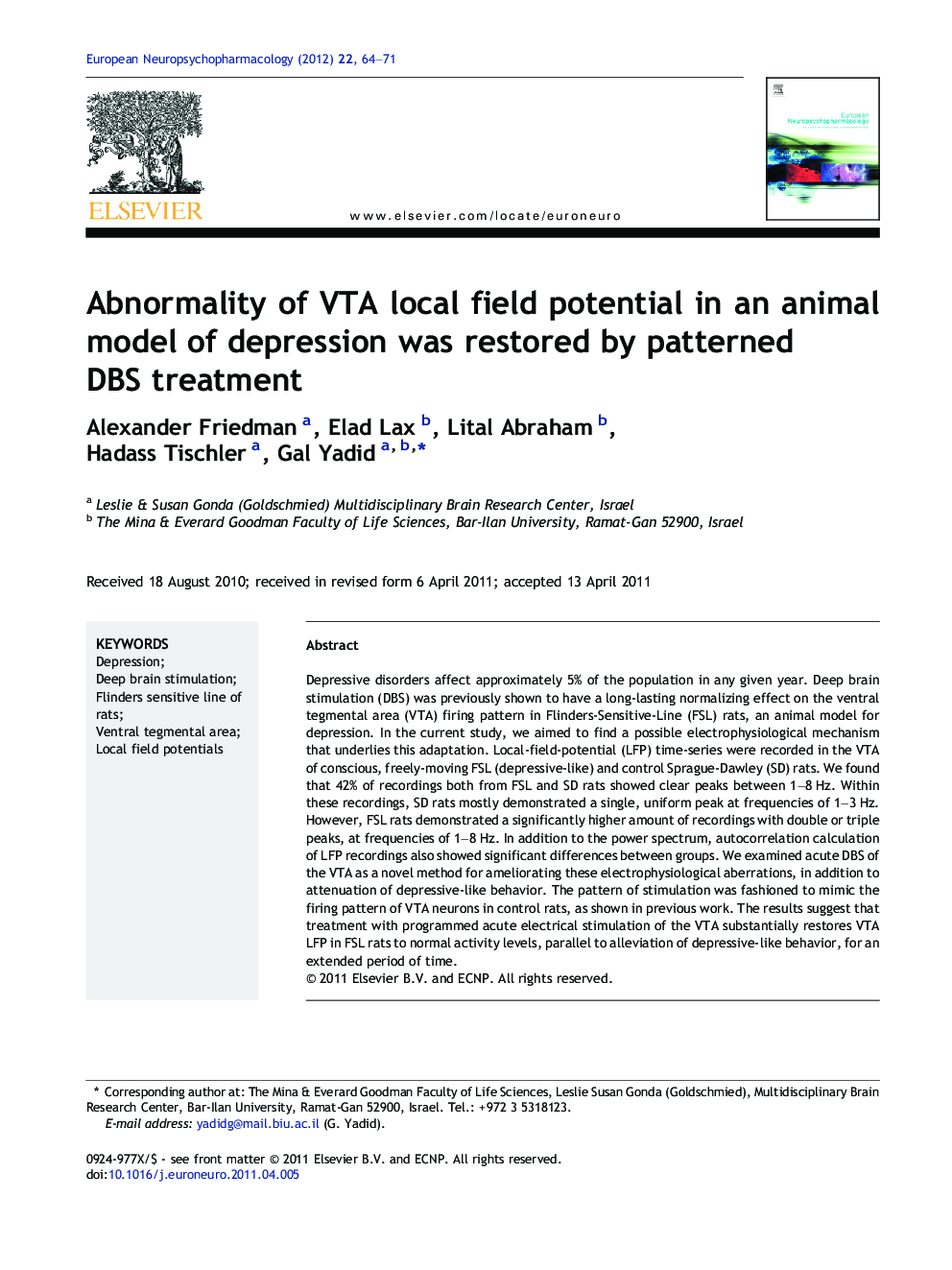| Article ID | Journal | Published Year | Pages | File Type |
|---|---|---|---|---|
| 318939 | European Neuropsychopharmacology | 2012 | 8 Pages |
Depressive disorders affect approximately 5% of the population in any given year. Deep brain stimulation (DBS) was previously shown to have a long-lasting normalizing effect on the ventral tegmental area (VTA) firing pattern in Flinders-Sensitive-Line (FSL) rats, an animal model for depression. In the current study, we aimed to find a possible electrophysiological mechanism that underlies this adaptation. Local-field-potential (LFP) time-series were recorded in the VTA of conscious, freely-moving FSL (depressive-like) and control Sprague-Dawley (SD) rats. We found that 42% of recordings both from FSL and SD rats showed clear peaks between 1–8 Hz. Within these recordings, SD rats mostly demonstrated a single, uniform peak at frequencies of 1–3 Hz. However, FSL rats demonstrated a significantly higher amount of recordings with double or triple peaks, at frequencies of 1–8 Hz. In addition to the power spectrum, autocorrelation calculation of LFP recordings also showed significant differences between groups. We examined acute DBS of the VTA as a novel method for ameliorating these electrophysiological aberrations, in addition to attenuation of depressive-like behavior. The pattern of stimulation was fashioned to mimic the firing pattern of VTA neurons in control rats, as shown in previous work. The results suggest that treatment with programmed acute electrical stimulation of the VTA substantially restores VTA LFP in FSL rats to normal activity levels, parallel to alleviation of depressive-like behavior, for an extended period of time.
